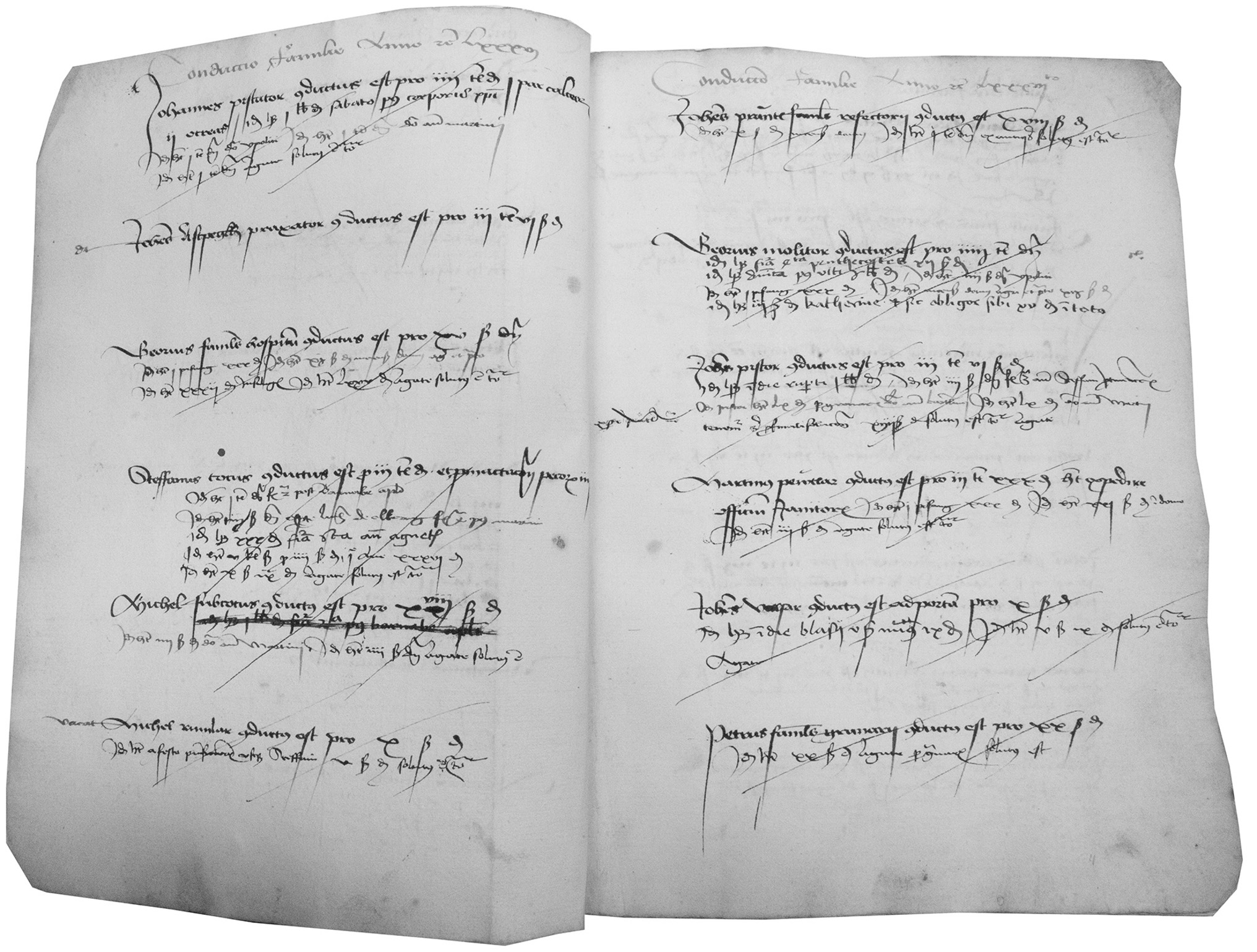The Accounts of Aldersbach Monastery
The accounts of Aldersbach monastery. Analysing the social and economic history of a prototypical large enterprise using digital methods
Medieval and early modern monastery accounts provide a variety of insights into the everyday life of the monks as well as into the so-called ‘great’ history. This is why the important Austrian historian Alphons Lhotsky explicitly categorised accounts as diaries. Account books often allow insights that would otherwise be denied. Often – unintentionally and therefore usually all the more valuable – events and occurrences were documented that would otherwise be missing from the rest of the written record. It should be noted that the information relevant to various historical disciplines can often be found ‘between the lines’, as the intention of the accountants was by no means to report on the events of those years for posterity, but rather to be able to present as complete a record of income and expenditure as possible for audits. Of course, the economic affairs of a monastery are also extensively documented in these sources.
Aldersbach can be considered a typical example of a Bavarian Cistercian monastery during the 15th and 16th centuries. Although the history of this community itself is comparatively poorly researched, the good tradition of the accounts in the period mentioned and the fact that Aldersbach was an average religious community, which existed in comparable size hundreds of times throughout Europe, make the Lower Bavarian monastery appear almost prototypical.
The use of automated handwritten text recognition with Transkribus to decipher the hard-to-read Latin and German account books and the AI-supported, automated data processing and analysis by Digital Humanities for an economic and social-historical classification based on this can be regarded as very efficient and innovative in this combination.
The aim of a planned academic study with the working title “Life and work in a late medieval monastery. An economic and social history of Aldersbach Monastery 1449–1567” is to firstly analyse the economic foundations of the monastery over time. Secondly, the social structure of the fifty or so employees is to be analysed. Ideally, it will also be possible to determine real incomes for certain occupational groups and thus make a contribution to the international research on living standards in the pre-modern period, which has been booming for a good twenty years. A further dissertation in the field of Digital Humanities and studies on topics from other historical disciplines round off the project’s publication activities.
Consultant: Bernhard Lübbers (Staatliche Bibliothek Regensburg). Team members: Sebastian Pößniker (Economic and Social History, University of Regensburg), Maximilian Vogeltanz (Digital Humanities, University of Graz), N.N. (Transkribus, ÖAW), N.N. (Latin proofreading, ÖAW), Johannes Schwarz („Donauschriftdeutsch“ in Kurrent script, ÖAW) and Mark Kröll (Know Center Graz). Cooperation partners: Read Coop SCE (Transkribus) and Bayerisches Hauptstaatsarchiv München.






Project lead
Partners
Georg Vogeler, University of Graz | Centre for Information Modelling
Roman Kern, Know Center Graz
Mark Spoerer, University of Regensburg | Economic and Social History
Funding
DFG & FWF 10.55776/PIN2678923 (Weave program for international collaboration)
Duration
05/2024–04/2027
